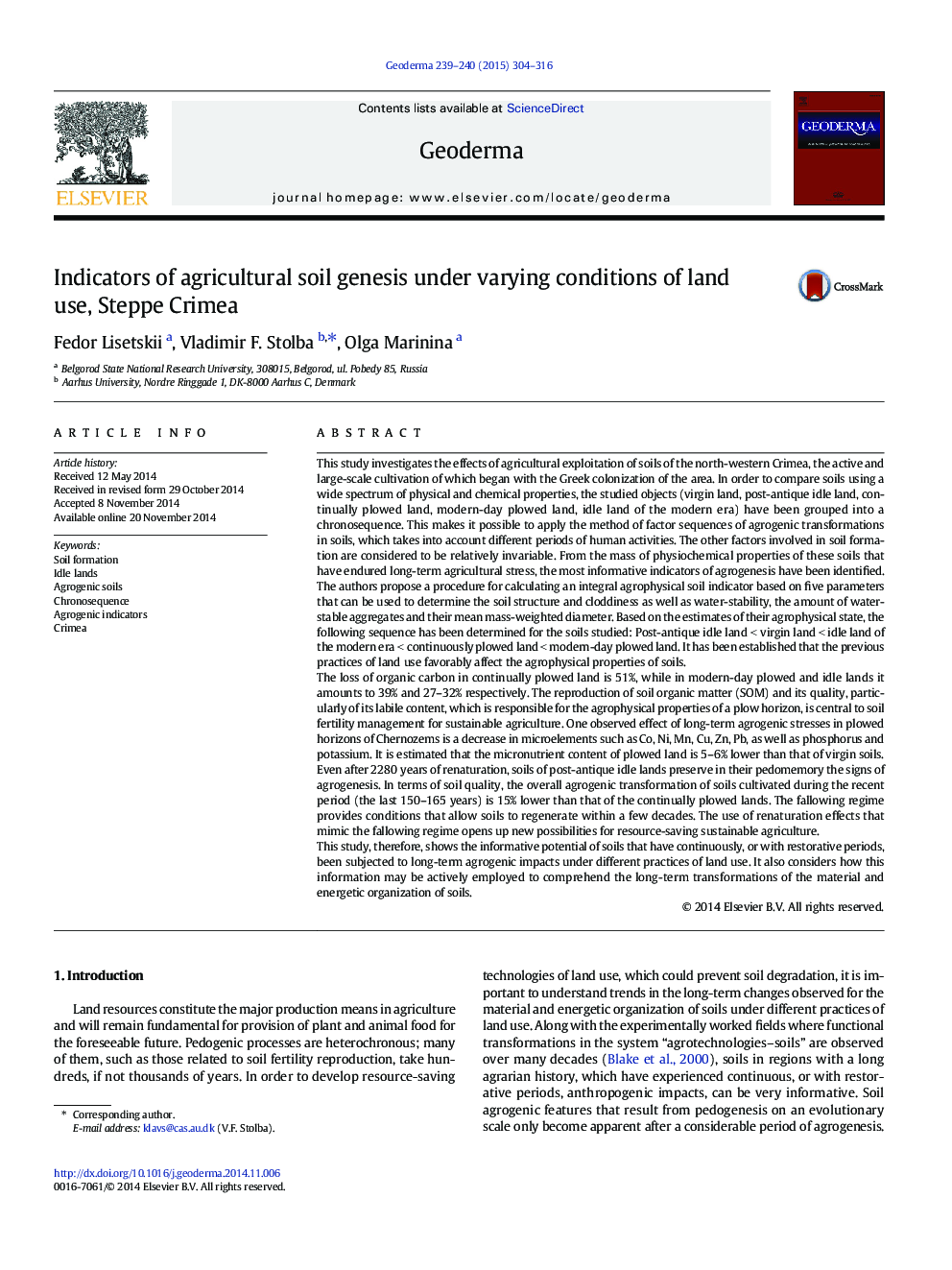| کد مقاله | کد نشریه | سال انتشار | مقاله انگلیسی | نسخه تمام متن |
|---|---|---|---|---|
| 6408684 | 1629466 | 2015 | 13 صفحه PDF | دانلود رایگان |

- Indicators of agrogenesis in the post-antique agrolandscapes are identified.
- Previous practices of land use favorably affect the agrophysical soil properties.
- Reproduction of soil organic matter is a priority in soil fertility management.
- Indicators of agrogenesis characterize the pedomemory of post-antique agrolandscapes.
This study investigates the effects of agricultural exploitation of soils of the north-western Crimea, the active and large-scale cultivation of which began with the Greek colonization of the area. In order to compare soils using a wide spectrum of physical and chemical properties, the studied objects (virgin land, post-antique idle land, continually plowed land, modern-day plowed land, idle land of the modern era) have been grouped into a chronosequence. This makes it possible to apply the method of factor sequences of agrogenic transformations in soils, which takes into account different periods of human activities. The other factors involved in soil formation are considered to be relatively invariable. From the mass of physiochemical properties of these soils that have endured long-term agricultural stress, the most informative indicators of agrogenesis have been identified.The authors propose a procedure for calculating an integral agrophysical soil indicator based on five parameters that can be used to determine the soil structure and cloddiness as well as water-stability, the amount of water-stable aggregates and their mean mass-weighted diameter. Based on the estimates of their agrophysical state, the following sequence has been determined for the soils studied: Post-antique idle land < virgin land < idle land of the modern era < continuously plowed land < modern-day plowed land. It has been established that the previous practices of land use favorably affect the agrophysical properties of soils.The loss of organic carbon in continually plowed land is 51%, while in modern-day plowed and idle lands it amounts to 39% and 27-32% respectively. The reproduction of soil organic matter (SOM) and its quality, particularly of its labile content, which is responsible for the agrophysical properties of a plow horizon, is central to soil fertility management for sustainable agriculture. One observed effect of long-term agrogenic stresses in plowed horizons of Chernozems is a decrease in microelements such as Co, Ni, Mn, Cu, Zn, Pb, as well as phosphorus and potassium. It is estimated that the micronutrient content of plowed land is 5-6% lower than that of virgin soils.Even after 2280 years of renaturation, soils of post-antique idle lands preserve in their pedomemory the signs of agrogenesis. In terms of soil quality, the overall agrogenic transformation of soils cultivated during the recent period (the last 150-165 years) is 15% lower than that of the continually plowed lands. The fallowing regime provides conditions that allow soils to regenerate within a few decades. The use of renaturation effects that mimic the fallowing regime opens up new possibilities for resource-saving sustainable agriculture.This study, therefore, shows the informative potential of soils that have continuously, or with restorative periods, been subjected to long-term agrogenic impacts under different practices of land use. It also considers how this information may be actively employed to comprehend the long-term transformations of the material and energetic organization of soils.
Journal: Geoderma - Volumes 239â240, February 2015, Pages 304-316